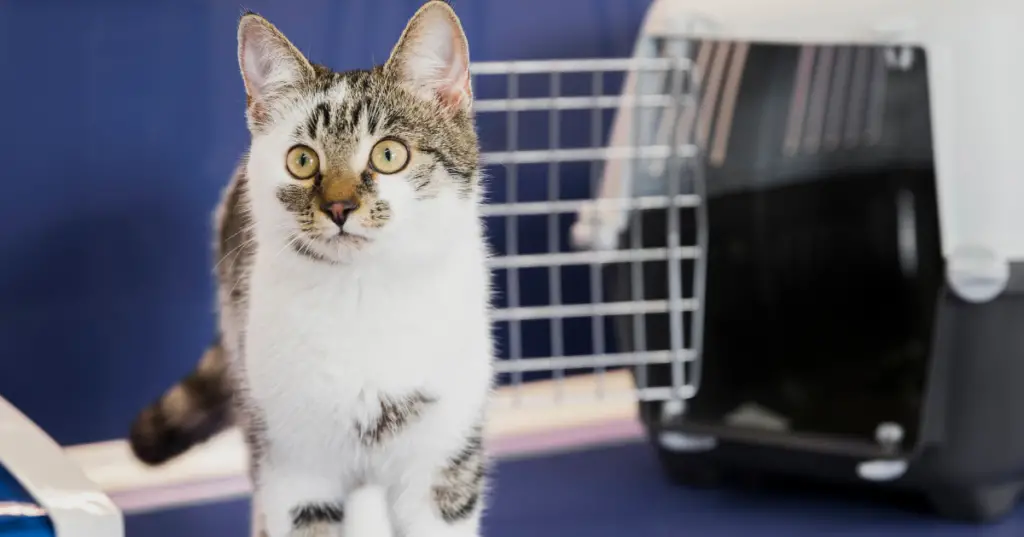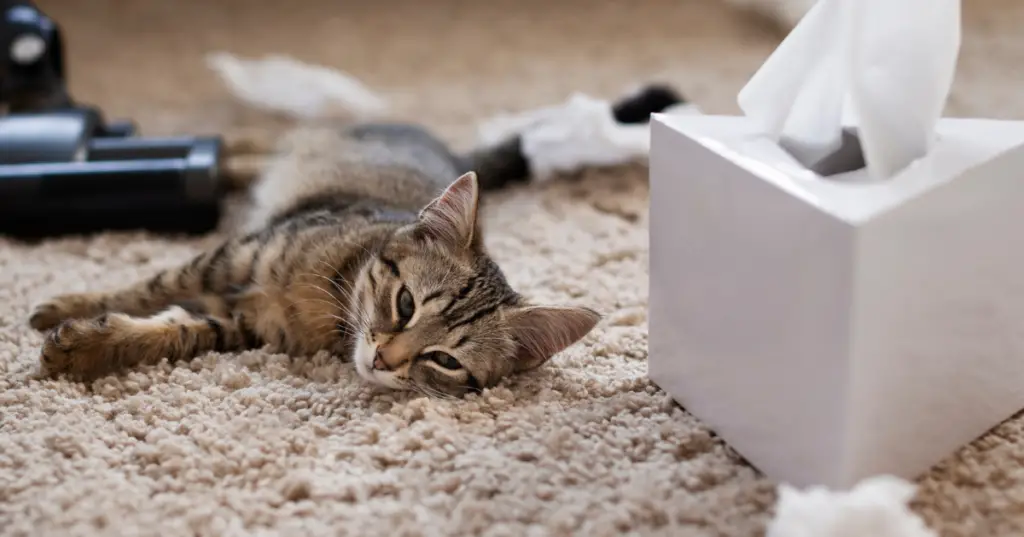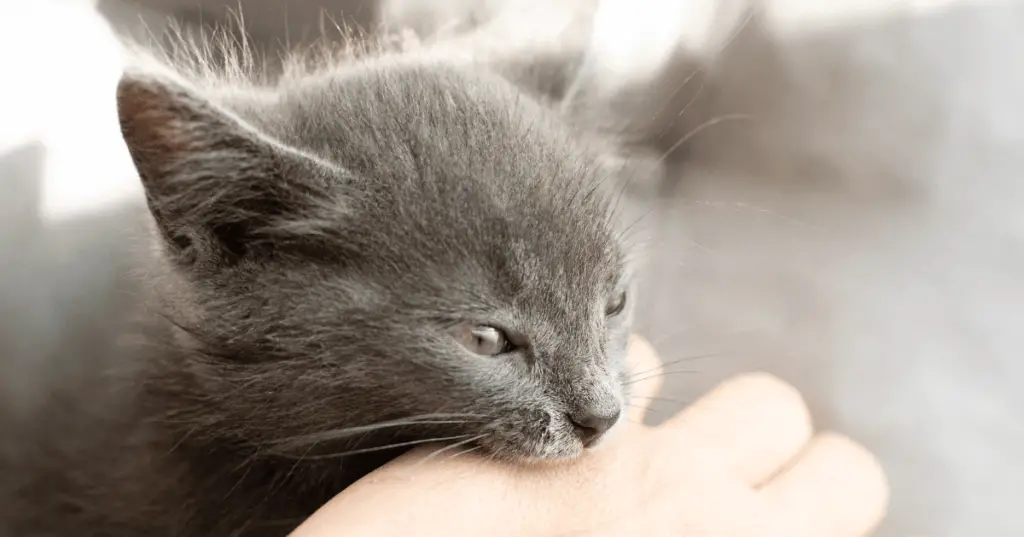Stray cats need our help. We can train them how to use a litter train a stray cat. This helps keep them safe and our neighbourhoods clean.
Make a comfy place for the cat inside. Give them food, water, and a soft spot to rest. Put the litter box in a quiet spot that’s easy for the cat to reach. Stray cats might be shy, so give them time to get used to their new home. Show them the litter box and gently put them in it. Be patient; they will learn.
In this article, we will talk about how to train stray cats in litter. Easy steps on how to make outdoor cat’s habits of indoors. Using the right litter unscented clumping litter works best. Keep the litter box clean because cats like it tidy.
What Is the Behavior of Stray Cats?
Stray cats act differently because they don’t have a home or people to look after them. They’re often careful and may not come close to people because they have learned to be cautious while living outside. These cats have to find their own food, which means they might hunt small animals or look in garbage cans for something to eat.
They usually live alone or with just a few other cats, not like pet cats that hang around with people. if they feel someone might harm them the cat might bite the person.
Stray cats are more active at night when they hunt or find food. During the day, they hide in quiet spots to stay safe from dangers or people. Like all cats, they spend a lot of time cleaning themselves. If they’re not fixed, they can have lots of kittens, which adds to the number of stray cats. Every stray cat is different. Some might be friendly, while others are scared of people
Steps to Litter Train a Stray Cat
Training a stray cat to use a litter box can be a bit more challenging than training a kitten, but it is possible with patience and consistency.
Step #1 Preparation
When you decide to help a stray cat use a litter box, you will need to create a comfortable starting point. Choose a small, quiet room in your home for the cat’s initial space. In this room, place a clean litter box filled with clumping cat litter. This type of litter is similar to the texture of soil and is often preferred by cats.
Allow the cat to explore this room at its own pace. The cat needs to become familiar with its new environment, especially the litter box. While it explores keep an eye out for any signs that it needs to use the bathroom like sniffing around or scratching at the floor.
Step #2 Guided Placement
To help the cat understand the purpose of the litter box, gently place it inside the box after meals or when you notice it’s showing signs of needing to go. Encourage the cat to dig in the litter with its paws; this helps it understand that the litter box is the place to go potty.
If the cat uses the litter box correctly, offer immediate praise and maybe a treat or some affection. This positive reinforcement helps the cat associate the litter box with a good experience.

Step #3 Consistent Cleanup
Cats like clean spaces, so make sure to scoop the litter box daily. This keeps it fresh and inviting. Additionally, change the litter regularly, typically once a week or when it looks dirty. If the litter is dirty, the cat might avoid using the box.
If the cat has an accident outside the litter box, it’s important to clean it up promptly. Use an enzymatic cleaner to remove any smell. Cats have a strong sense of smell, and if they can still smell their waste.
Step #4 Gradual Freedom and Supervision
As the cat becomes more consistent in using the litter box, you can start giving it more access to the rest of your home. However, make sure to supervise its movements, especially initially. This way, you can prevent accidents and gently guide it back to the litter box if needed.
Keep up with the positive reinforcement for good behavior. If the cat continues to use the litter box correctly, it will learn over time that this is where it’s supposed to go potty.
Step # 5 Patience and Positive Reinforcement
Remember, training a stray cat might take time. Be patient and understanding. Never punish the cat for accidents. Punishment can make the cat fearful and anxious, which can hinder the training process. Instead, stay consistent with praise and rewards when the cat uses the litter box correctly.
Each cat is unique, and some may take longer to adjust than others. Stay positive, and your persistence will pay off.
Step #6 Veterinary Consultation and Considerations
If the cat continues to have litter box issues despite your efforts, it’s a good idea to consult a veterinarian. There could be underlying medical problems causing this behavior. It’s essential to rule out any health concerns.
Can Stray Cats Know How to Use Litter
Stray cats might or might not know how to use a litter box. Some do because they’ve used one before as a pet or seen other cats use it. Cats naturally want to bury their waste, so they can understand using a litter box.
But some stray cats might need help. You can teach them by gently placing them in the litter box and giving them treats when they use it. Be patient and don’t punish them if they make mistakes.
Conclusion
Stray cats act differently because they don’t have a home or people to look after them. They’re often careful and may not come close to people because they’ve learned to be cautious while living outside. These cats have to find their own food, which means they might hunt small animals or look in garbage cans for something to eat.
They usually live alone or with just a few other cats, not like pet cats that hang around with people. Training a litter train a stray cat can be a bit tricky, but it’s possible with patience and consistency. Each stray cat is unique, so you need to be patient and gentle.
You create a comfy spot for them, teach them to use a litter box, and reward them when they do it right. If they have accidents, clean it up, and keep the litter box clean. Gradually, they’ll get the hang of it. If you’re having trouble, it’s okay to ask a vet for help



